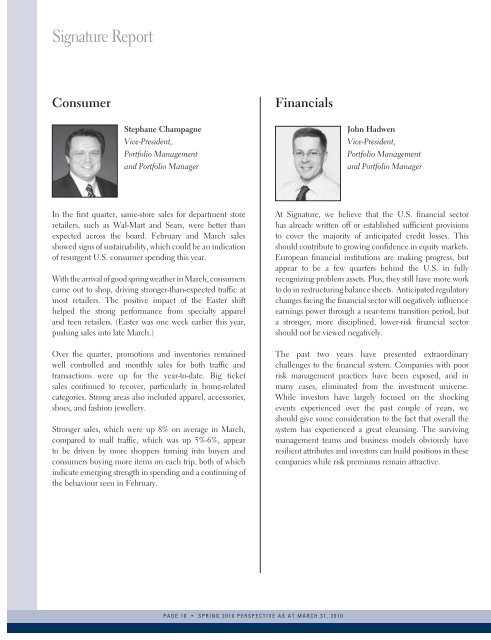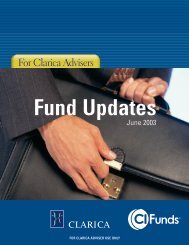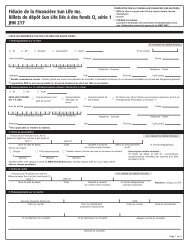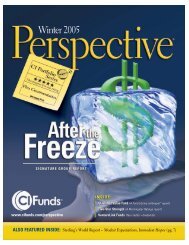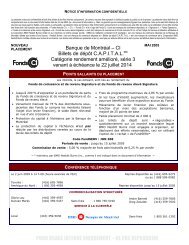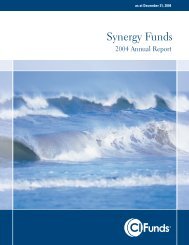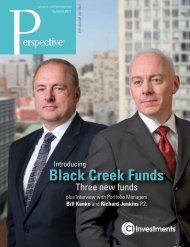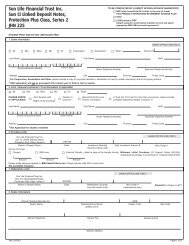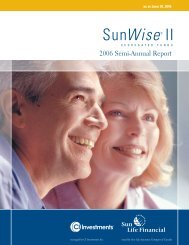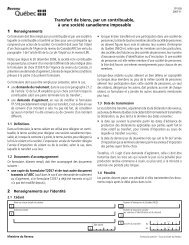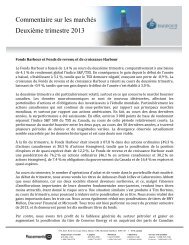March - CI Investments
March - CI Investments
March - CI Investments
- No tags were found...
Create successful ePaper yourself
Turn your PDF publications into a flip-book with our unique Google optimized e-Paper software.
Signature ReportConsumerFinancialsStephane ChampagneVice-President,Portfolio Managementand Portfolio ManagerJohn HadwenVice-President,Portfolio Managementand Portfolio ManagerIn the first quarter, same-store sales for department storeretailers, such as Wal-Mart and Sears, were better thanexpected across the board. February and <strong>March</strong> salesshowed signs of sustainability, which could be an indicationof resurgent U.S. consumer spending this year.With the arrival of good spring weather in <strong>March</strong>, consumerscame out to shop, driving stronger-than-expected traffic atmost retailers. The positive impact of the Easter shifthelped the strong performance from specialty appareland teen retailers. (Easter was one week earlier this year,pushing sales into late <strong>March</strong>.)Over the quarter, promotions and inventories remainedwell controlled and monthly sales for both traffic andtransactions were up for the year-to-date. Big ticketsales continued to recover, particularly in home-relatedcategories. Strong areas also included apparel, accessories,shoes, and fashion jewellery.Stronger sales, which were up 8% on average in <strong>March</strong>,compared to mall traffic, which was up 5%-6%, appearto be driven by more shoppers turning into buyers andconsumers buying more items on each trip, both of whichindicate emerging strength in spending and a continuing ofthe behaviour seen in February.At Signature, we believe that the U.S. financial sectorhas already written off or established sufficient provisionsto cover the majority of anticipated credit losses. Thisshould contribute to growing confidence in equity markets.European financial institutions are making progress, butappear to be a few quarters behind the U.S. in fullyrecognizing problem assets. Plus, they still have more workto do in restructuring balance sheets. Anticipated regulatorychanges facing the financial sector will negatively influenceearnings power through a near-term transition period, buta stronger, more disciplined, lower-risk financial sectorshould not be viewed negatively.The past two years have presented extraordinarychallenges to the financial system. Companies with poorrisk management practices have been exposed, and inmany cases, eliminated from the investment universe.While investors have largely focused on the shockingevents experienced over the past couple of years, weshould give some consideration to the fact that overall thesystem has experienced a great cleansing. The survivingmanagement teams and business models obviously haveresilient attributes and investors can build positions in thesecompanies while risk premiums remain attractive.PAGE 10 • SPRING 2010 PERSPECTIVE AS AT MARCH 31, 2010


